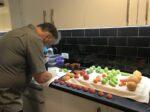DairyNZ: Budget spending needs a long-term vision
The Budget’s focus on jobs, infrastructure and the environment has hit the spot, but the devil will be in the detail for the dairy sector, says DairyNZ chief executive Dr Tim Mackle. “The budget includes some promising and practical initiatives to create jobs, while enhancing New Zealand’s environment,” said Dr Mackle. “Dairy farmers will be particularly pleased to see a $19.3 million investment to place 10,000 people into primary sector jobs. Our sector is already facing a 1000-person skill shortage that will be greatly exacerbated by COVID-19 and an inability to recruit migrant staff. “With unemployment forecast to hit 9.8 percent by September, we are hoping many kiwis will consider a career in our world-leading dairy sector. DairyNZ’s new career changers campaign, Go Dairy, will ensure new entrants to the sector will hit the ground running. “A $3 billion dollar investment in infrastructure is welcome news for rural New Zealand – but while the dollars are there, the detail isn’t. DairyNZ will be engaging with Government in coming weeks and months to ensure water storage, rural broadband and enhanced mobile coverage are priorities. “While a significant infrastructure spend is required, we are incredibly conscious these projects are funded by debt that will need to be repaid by future generations,” said Dr Mackle. “We need to ensure that any investment is strategic, has a long-term vision and will pay dividends for years to come. Investing in a coordinated national water storage strategy is an example of a project that ticks all these boxes. “A coordinated approach to water storage would help unlock economic potential, ensure land-use flexibility, and increase the resilience of our rural communities in the face of drought and a changing climate. “DairyNZ is also happy to see substantial […]








